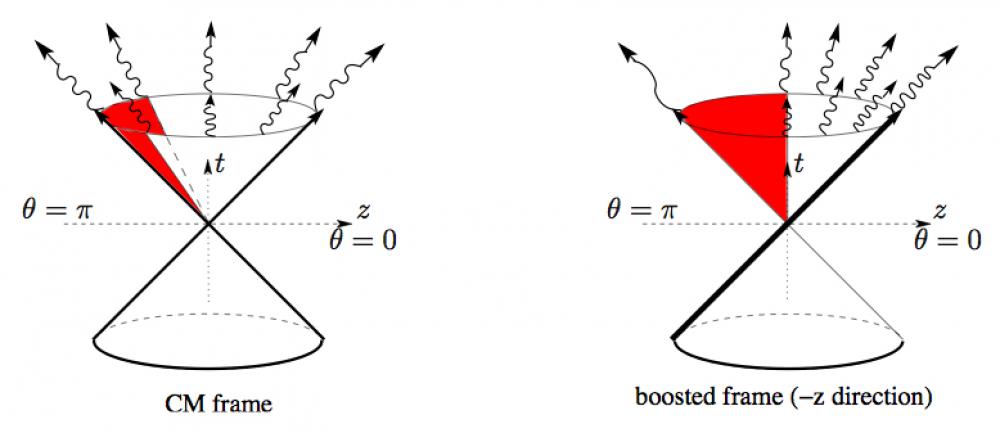Theoretical arguments suggest that an ultra-relativistic particle collision forms a black hole with a strong emission of gravitational radiation. A study by a team of Gr@v researchers, published in Physical Review Letters, shows that this radiation follows a remarkable and mysterious pattern.
If particles collide at centre of mass energies beyond the Planck scale, the `hoop conjecture' states that a black hole forms. Moreover the process should be well described by classical general relativity, as first argued by the Nobel prize winner Gerard 't Hooft.
The Planck scale is, however, extremely high and unattainable in any existing (and probably future) man made particle accelerator. In the late 1990s and early 2000s a series of papers suggested that if there are more than four dimensions the true Planck scale could be much lower than traditionally thought, possibly as low as the energy scales probed by the Large Hadron Collider (LHC) at CERN. Thus, interest in exploring black hole creation in D-dimensional particle collisions flourished.
In the process of black hole formation, a large percentage of the centre of mass energy is expected to be emitted as gravitational radiation, instead of ending up in the black hole. This fraction is called the inelasticity of the process. A very natural question is how much is the inelasticity in an ultra-relativistic (i.e. when the particles approach the speed of light), head-on collision of two particles. Such computation is challenging, since it explores the non-linear, non-perturbative, strongly time dependent regime of General Relativity.
A team composed totally by Gr@v members (Flávio Coelho, Carlos Herdeiro and Marco Sampaio), developing previous work also by Gr@v members (including Carmen Rebelo) showed that in an approximate framework which involves analytical and numerical methods, the inelasticity exactly fits a remarkably simple and simultaneously mysterious formula: 1/2-1/D, obtained as a numerical fit.
This formula has an asymptotic behaviour that matches other methods and it suggests that a deeper understanding of this problem is around the corner.
